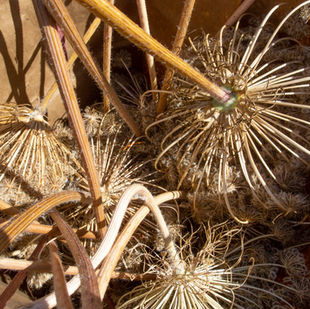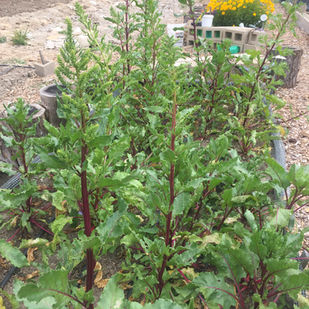

Growing Biennials Seeds
Onions, carrots and beets are some of our most popular vegetables. If you are growing them to eat, they are harvested in their first growing season - well before they flower or go to seed. If you are growing them for seed, they require two growing seasons separated by a cold period. That’s because they are all biennials!
Biennials grown for seed require extra care, because the crops are in the ground for a long time – a year or more. At the seed garden, we pay close attention to soil fertility, moisture requirements, pest issues, and other crops in the area that might cross with them – like Queen Anne’s lace for carrots - so we can increase our chances of a good harvest of healthy, vibrant seed.
We also make sure to plant enough plants of all of the crops, so that we ensure a broad genetic base. This is important for producing seed with characteristics true to type and to also include genes that might increase the varieties’ ability to adapt to climate change or extreme weather events. For all three of these crops, we try to have a final population of between 20 and 30 plants.
The onions seeds are started indoors in March and planted out in April. They continue to grow and mature through the summer. After their necks have dried down and the water has been turned off, we pull the plants and cut their tops down. We separate out any off types. The onions are then stored in a cool environment over the winter – this year a nearby barn - out of harm’s way until it is safe to replant in late winter. We find this process works well for onions and reduces the chances that they will rot in the soil over the winter.
Carrots and beets are sown directly into the soil in August.
They mature through the early fall. Unlike what we do with the onions, we leave the carrots and beets in the ground during the colder weather, because they are less likely to rot. In late winter we pull them up, evaluate them and replant only the healthiest individuals and those that express the characteristics of the variety. We cull out the off types.
Once all the crops are back in the ground – spaced farther apart, because they grow bigger when they flower - they start to regrow. In this second growing season, after a cold period of about 8-10 weeks, the crops use all their energy to produce flowers and then seeds.
The photos below illustrate the growth cycle for all three biennials.
Onions
Seeds started indoors in March; Seed produced in August of the following year.
Carrots
Direct sow seeds in August. Seed produced in July of the following year.
Beets
Direct sow seeds in August. Seed produced in August of the following year
published by Seed Savers Exchange, is a great resource for more information on how to save seeds from biennials.






















